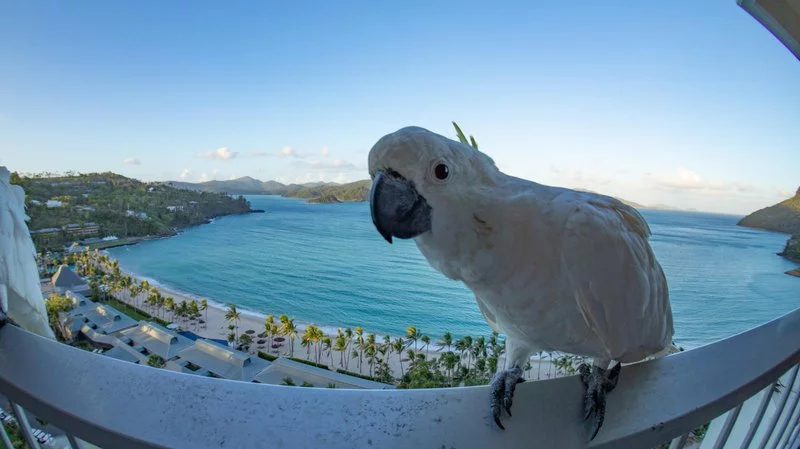The sulphur crested cockatoo is a large member of the cockatoo family which falls under the parrot group. There are 21 different species of cockatoo and they have a largely Australasian distribution being found from the Philippines all the way down to Australia. When people think of parrots, images of brightly coloured birds like macaws come to mind. However most cockatoos are the opposite of this with the bulk of their plumage being one colour, usually white, black or grey. Something that cockatoos do have in common with other parrots is their intelligence. These birds are thought to have a level of intelligence comparable to that of a chimpanzee. Their bird brains are capable of complex processing and are therefore quite skilled at problem solving and learning. They, like a lot of parrots, also have the ability to “talk†by mimicking the sounds made by humans, other animals and even machinery. This intelligence has enabled the sulphur-crested cockatoo to adapt quite well to humans and life in towns and cities, they have been spotted learning how to open bins and even turn on water fountains to get a drink. They are also quite curious, observant and have an emotional intelligence which allows them to form strong bonds with each other and even humans, this makes them quite popular as pets. Although they are not what you would call a song bird, these cockatoos like most have a loud screeching call and when all members in a flock, which can number in the hundreds, join in a call the sound can be deafening and definitely not pleasant.
The sulphur-crested cockatoo is native to Australia, New Guinea, Indonesia and New-Zealand and there are four different sub-species across these regions. They prefer to live in tropical and subtropical rainforests but they also now frequent urban areas. It is one of the larger cockatoo species reaching around 50 centimetres from beak to tail and weighing in around 780 grams. They also have one of the longest lifespans of all cockatoos living to 40 years on average in the wild and in captivity they have been known to reach 100 years or more. The main colour of their plumage is white with a yellow crest on their head which can be retracted to lay flat against their head or flared. The raising and lowering of this crest can be used as a method of communication between individuals or in a show of aggression or defence to make the bird appear larger.
These cockatoos are social birds and can form strong bonds with each other. During breeding season males court females with a physical display. They ruffle their feathers, raise their crest, extend their wings and then jump about. If the female approves she will let the male approach to mate. These mates form a close bond which can last a lifetime and cockatoos have been known to fill into a depression if a mate dies or they become separated from them. Breeding pairs will make a nest, which is usually in a tree hollow, and lay up to two eggs. Once chicks have hatched and left the nest they will still remain with the parents even after they have become fully grown meaning flocks are large family groups. The individuals in these flocks spend a lot of time interacting with each other, playing and breeding each other's feathers. They also work together for the protection of the flock, during feeding some cockatoos will sit high up in the trees keeping lookout while the others feed and if any threat has been detected the lookout will screech in warning.
The feed during the day and prefer to do so on the ground. The favourite foods of the sulphur-crested cockatoo are seeds, berries, roots, nuts, grasses and sometimes insects. Those living in close proximity to humans will also feed on fruits and vegetables from peoples gardens and farms. This behaviour has led to the sulphur-crested cockatoo being considered as a pest. They are also known to be quite destructive and messy birds sometimes even causing damage to houses and outdoor furniture with their sharp large beaks.




